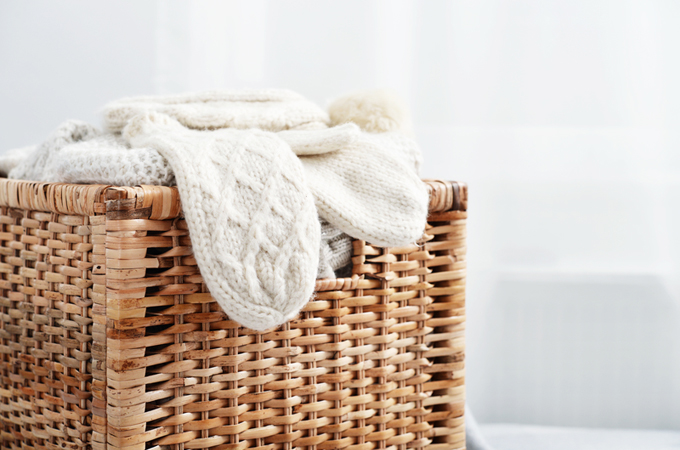
Whenever I pack for a trip, I organize my stuff into modules: for example, I have a toiletry module, a clothing module, a first aid module, and a “long flight” module (earplugs, eye mask, iPod Touch). This system helps me keep everything organized, and prevents me from overpacking.
When I moved overseas with a single duffle bag, I used a similar strategy. I arranged all my possessions in packing cubes: one for pants, one for shirts, one for underwear, one for paperwork, one for kitchen supplies, one for toiletries, etc. It made six weeks of hotel living significantly more pleasant and manageable.
In fact, I loved using modules so much, I made them an integral part of my everyday minimalist life. They’re the sixth step of the STREAMLINE strategy that I outline in my book.
There’s no great mystery to the concept: a module is simply a set of related items that perform a particular task. To make one, all you need to do is:
- Gather like items together
- Cull the excess (like duplicates!)
- Contain them for storage and/or portability
The container can be a drawer, shelf, box, storage bin, or ziplock bag—whatever’s handy and appropriate for the contents.
Modules are particularly beneficial for the following household items:
Craft supplies – dedicate one storage bin to each hobby, like knitting, scrapbooking, or beading
Office supplies – gather together all those pens, paperclips, sticky notes, and rubberbands
Kitchen gadgets
Spices, condiments, and baking supplies
Clothing – assign certain drawers, shelves, and containers to particular items
Sports equipment – use boxes, bins, or hanging bags to corral balls, helmets, pads, and more
Electronics – consolidate those cables, chargers, and headphones
Accessories – like jewelry, scarves, belts, wallets, and bags
Seasonal stuff – like winter hats and gloves, or summer flipflops and beach towels
Holiday decorations
Cleaning supplies
Cosmetics and toiletries
Why are modules so conducive to a minimalist lifestyle? Because they help you pare down in three ways:
1. When you consolidate like items into modules, you see exactly how much you have. Owning sixty-three pens seems more absurd when you see them all together, than when they’re scattered throughout the house. Ditto for twenty white t-shirts, three staplers, or a lifetime supply of yarn.
2. Modules put physical limits on your possessions. For example, once you fill up your box dedicated to video games, you have to toss something old before adding something new. It’s a super-effective way to put a lid on further accumulation.
3. Modules provide a place for everything, and keep everything in its place. The result: you’re much less likely to acquire an extra screwdriver, measuring tape, or bottle of vanilla when you can easily find the one you already have.
(Just a note: be sure to declutter, declutter, and declutter some more, before you put anything in a container–otherwise, you’re just organizing your clutter.)
Modules help you organize your stuff, eliminate the excess, and refrain from accumulating more. They’re one of the easiest and most effective ways to get your stuff under control—and keep it that way!
Let me know what you’re putting into modules in the Comments…
{If you’d like to read more about minimalist living, please consider buying my book, The Joy of Less, A Minimalist Living Guide, or subscribing to my RSS feed.}

My sister told me I couldn’t be a minimalist because I do so many crafts. Someone gave me a big box of CD’s for a project I am teaching. I kept 30 and recycled the rest. They were scratched and I asked a few friends. if they wanted some. When I got jars and bags of buttons, I only kept the ones I could use and gave away the rest. I was given bunches of broken silk flowers and just kept a Ziploc bag full of what I needed. People give me used junk all the time. Unless I can think of a use for it or it is valuable, I give it away or throw it away. A friend gave me several big bottles of glue. I gave her some money and gave away all but two small bottles of glue. I live in a small condo. I only keep what I need. I give away or recycle.as much as I can and most of my art supplies are free or from Goodwill. My furniture is secondhand or from Ikea. My husband was raised to buy everything new. I patch and repair as much as I can. I have friends with closets and basements full of enough craft supplies for twenty years.
I have a small box with sewing supplies. Somehow, I have four seam rippers. I put two in a give away bag. Then I found some embroidery floss left from a project some years ago. All the unopened packages went in a Ziploc bag in the give away pile. I gave away 50 quilting pins. I still have one quilting book.
I made curtains for my sister many years ago. I made three quilts and lost interest. I have done origami and various other paper crafts. I saved a small box or bag for each craft and one book of instructions. I have taught kids how to make corn husk dolls. I made doll clothes by sewing and crochet. I paint and draw. I have a bag of beautiful colored pencils.